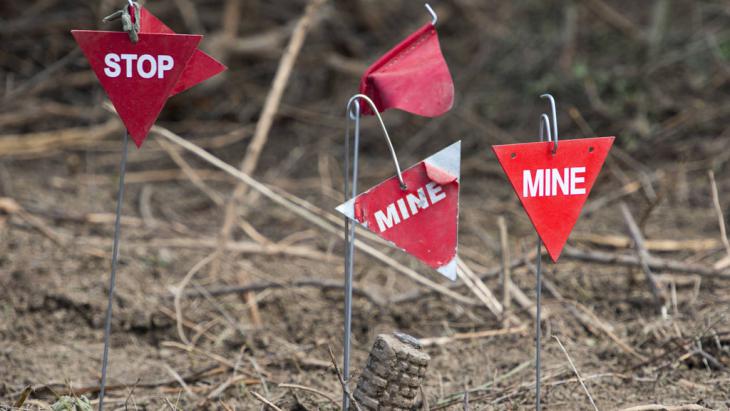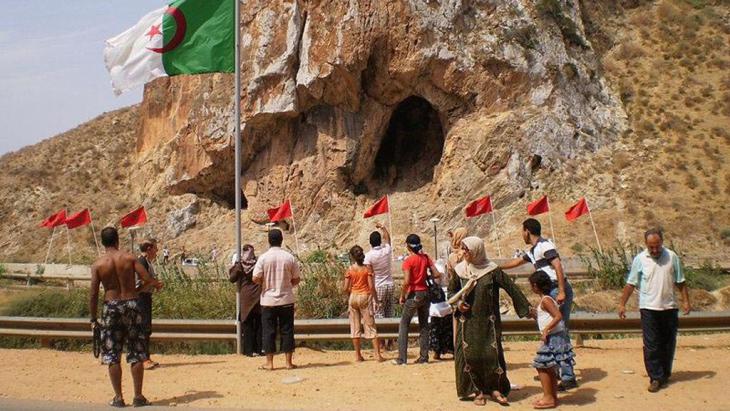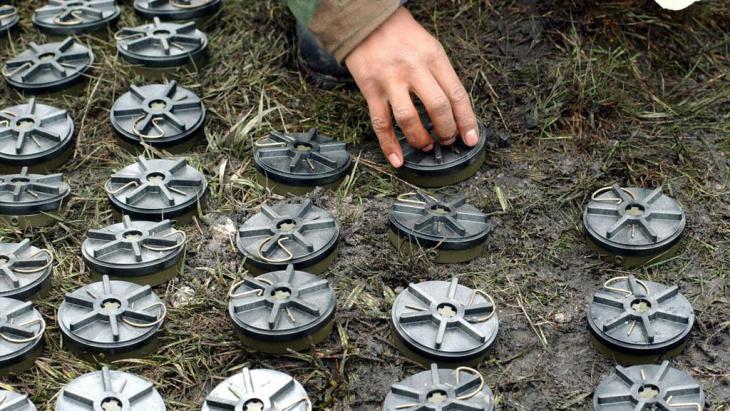Open wounds

"A 14-year-old girl on holiday with her parents in Beni Ksila, 200 km east of Algiers, stepped on a landmine while picking figs in the family's orchard. The child's condition is no longer critical, but she has lost a leg." For over 50 years now, sad reports like this one in "El Watan" on 23 August 2007 have been quite common in Algerian newspapers.
Algeria has been a mined country since the Second World War. But the landmines and their victims are, for the most part, a legacy of the colonial era, or more precisely of the Algerian War. As the French slowly withdrew between 1956 and 1962, they heavily mined the border areas with their lost protectorates in Morocco and Tunisia in order to shield Algeria, the last French colony in the Maghreb, from the inside.
Mines were also used during the Algerian Civil War of the 1990s. Nearly three million were still in place at the beginning of the millennium, as recorded, for example, by the 2013 "Landmine Monitor Report" published by Human Rights Watch, Handicap International and other organisations.
Algeria originally had to deal with around 11 million landmines. Official records show that since then, over 4,000 people have lost their limbs, been blinded, lost their hearing or been severely traumatised after taking a fateful step. Victims' associations assume that the number of victims is far higher, up to 80,000. The fatalities, whose number is estimated to be another 40,000, do not appear in the official statistics.

Like a needle in a haystack
Every two hours, a person steps on a landmine somewhere in the world. In most cases it is a civilian; in half of them, a child. The tragedy in Algeria is that many of the more than 4,000 accidents could have been prevented if France had disclosed sooner – or at all – the exact locations of the mined areas.
After gaining independence, Algeria was left to cope with the gargantuan task of clearing the mines on its own – without adequate technical equipment, expertise or specialists trained for the job. The only information available to the Algerian clearance teams was the fact that mines had been laid along the so-called Morice and Challe lines. Algeria being the largest country on the African continent, it was like searching for a needle in a haystack.
The Morice and Challe lines (sometimes known together as the Morice and Challe line because they overlap in parts) get their names from the men responsible for them, former French Defence Minister André Morice and General and Supreme Commander Maurice Challe. The two military strategists ensured that the borders with Tunisia and Morocco were impassable by creating huge buffer zones. Barbed wire, electric fences, landmines and guard towers stretched over hundreds of kilometres from north to south on each line.
Together, this corresponds to a strip of land approximately the length of the former border between East and West Germany, which was almost 1,400 kilometres long. However, this inner-German border was secured by "only" 1.2 million mines, while in Algeria, the number was nearly ten times as high. In this way, the French strove to prevent the foreign-trained resistance fighters of the National Liberation Front (FLN) from crossing the borders during the Algerian War of Independence.
Soviets provide demining expertise
After independence, two special units trained with the help of the former Soviet Union tackled the Sisyphean task of clearing the mines. Over a period of 25 years, the two clearance teams defused some eight million mines. Algeria would probably be mine-free today if their work had not been interrupted by the "Black Decade", the Algerian Civil War that raged in the 1990s between Islamists and government troops.
Clearance operations were not resumed until 2004, after Algeria ratified the Ottawa Convention to ban anti-personnel mines at the end of 2001, thereby committing itself to clearing the mines. The work is scheduled to be completed by 2017. Although France is also among the 162 countries that have thus far signed the Ottawa Convention, its co-operation with Algeria has been sluggish.

France's selective way of coming to terms with the past
It was not until 2007 that the former colonial power could bring itself to hand over to Algeria a map of the anti-personnel mines on its territory. Unfortunately, the map hardly contained any new information, as senior military advisors indignantly noted. These same advisors also pointed out that after nearly half a century of erosion and the effects of weather, the locations of the landmines had changed, rendering the documents useless.
For France, helping to clear the landmines is tantamount to admitting its guilt, and it is widely known that the country has difficulties coming to terms with its colonial past. This is why the Algerian War is sometimes referred to as the "war without a name", a reference to the four-hour 1992 documentary entitled "La guerre sans nom", by Bertrand Tavernier and Patrick Rotman.
Also in 1992, the famous historian Benjamin Stora examined the repression of the Algerian War in the French collective memory in his book "Gangrene and Oblivion" ("La gangrène et l'oubli"). The country thus first began to grapple with its colonial history in the context of the intellectual debate.
Mined relations between Algeria and France
To this day, mine victims and their loved ones are still struggling for recognition and compensation – both of which France denies them, remaining faithful to its policy of disowning the atrocities committed during the colonial period. Regional associations are thus tasked with supporting the Algerian mine victims on behalf of the Defence Ministry, working together with international NGOs such as Handicap International. Victims are, for example, given schooling and educational opportunities befitting their disabilities.
The past still weighs heavily on diplomatic relations between France and Algeria too. Just recently, the Algerian daily paper "El Watan" carried the headline: "L'héritage colonial continue de miner l'Algérie" (The colonial legacy continues to mine Algeria).
Susanne Kaiser
© Qantara.de 2014
Translated from the German by Jennifer Taylor
